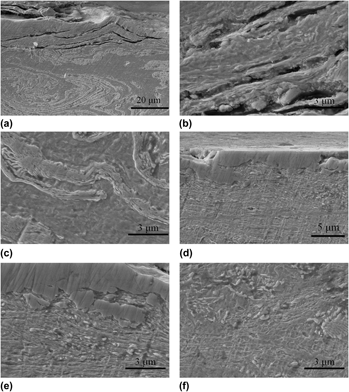Crossref Citations
This article has been cited by the following publications. This list is generated based on data provided by
Crossref.
Sun, Z.
Wang, H.
Ye, Y.
Xu, Z.
and
Tang, G.
2018.
Effects of electropulsing on the machinability and microstructure of GH4169 superalloy during turning process.
The International Journal of Advanced Manufacturing Technology,
Vol. 95,
Issue. 5-8,
p.
2835.
Ye, Yongda
Kure-Chu, Song-Zhu
Sun, Zhiyan
Matsubara, Takashi
Tang, Guoyi
Hihara, Takehiko
Okido, Masazumi
and
Yashiro, Hitoshi
2018.
Self-lubricated nanoporous TiO2-TiN films fabricated on nanocrystalline layer of titanium with enhanced tribological properties.
Surface and Coatings Technology,
Vol. 351,
Issue. ,
p.
162.
Sun, Zhiyan
Ye, Yongda
Xu, Jinbao
Hu, Timin
Ren, Shuai
and
Li, Bo
2019.
Effect of Electropulsing on Surface Mechanical Behavior and Microstructural Evolution of Inconel 718 during Ultrasonic Surface Rolling Process.
Journal of Materials Engineering and Performance,
Vol. 28,
Issue. 11,
p.
6789.
Sinyakova, E. A.
Kazachenok, M. S.
Panin, S. V.
and
Martynov, S. A.
2020.
Microstructure of SLM Ti-6Al-4V parts subjected to electropulsing assisted ultrasonic impact treatment.
Vol. 2296,
Issue. ,
p.
040029.
Kolubaev, A.V.
Sizova, O.V.
Fortuna, S.V.
Vorontsov, A.V.
Ivanov, A.N.
and
Kolubaev, E.A.
2020.
Weld structure of low-carbon structural steel formed by ultrasonic-assisted laser welding.
Journal of Constructional Steel Research,
Vol. 172,
Issue. ,
p.
106190.
Sinyakova, E. A.
Martynov, S. A.
and
Kazachenok, M. S.
2020.
Microstructure and mechanical properties of EBF3 Ti–6Al–4V parts subjected to ultrasonic impact treatment assisted with pulsed electric current exposure.
Vol. 2310,
Issue. ,
p.
020317.
Liu, Tao
Li, Xiaopei
Tang, Guoyi
and
Song, Guolin
2020.
Microstructure Evolution and Recrystallization of D36 Steel during Ultrasonic Impact Assisted with Electropulsing and Heat.
Journal of Materials Engineering and Performance,
Vol. 29,
Issue. 1,
p.
541.
John, Merbin
Ralls, Alessandro M.
Dooley, Scott C.
Thazhathidathil, Akhil Kishore Vellooridathil
Perka, Ashok Kumar
Kuruveri, Udaya Bhat
and
Menezes, Pradeep L.
2021.
Ultrasonic Surface Rolling Process: Properties, Characterization, and Applications.
Applied Sciences,
Vol. 11,
Issue. 22,
p.
10986.
Reschka, Silvia
Gerstein, Gregory
Dalinger, Andrej
Zaibet, Mohamed Fedi
Herbst, Sebastian
and
Maier, Hans Jürgen
2023.
Accelerated coarsening behavior of the γ´-phase in CMSX-4 during non-isothermal heat treatment.
Materials Today Communications,
Vol. 36,
Issue. ,
p.
106703.
Zhao, Rui
Zhang, Dongxu
and
Wan, Min
2023.
A review of strengthening mechanisms and applications of the multifield-coupled manufacturing process.
Journal of Materials Processing Technology,
Vol. 320,
Issue. ,
p.
118128.
Gu, Bangping
Yang, Yuchen
Wang, Yansong
Lai, Jintao
Xu, Guanhua
Gao, Liqiang
Hu, Yongli
and
Luo, Fangzheng
2025.
Study on the effects and mechanisms of ultrasonic impact treatment on impact toughness of Q345 steel welded joints.
Engineering Fracture Mechanics,
Vol. 315,
Issue. ,
p.
110754.
